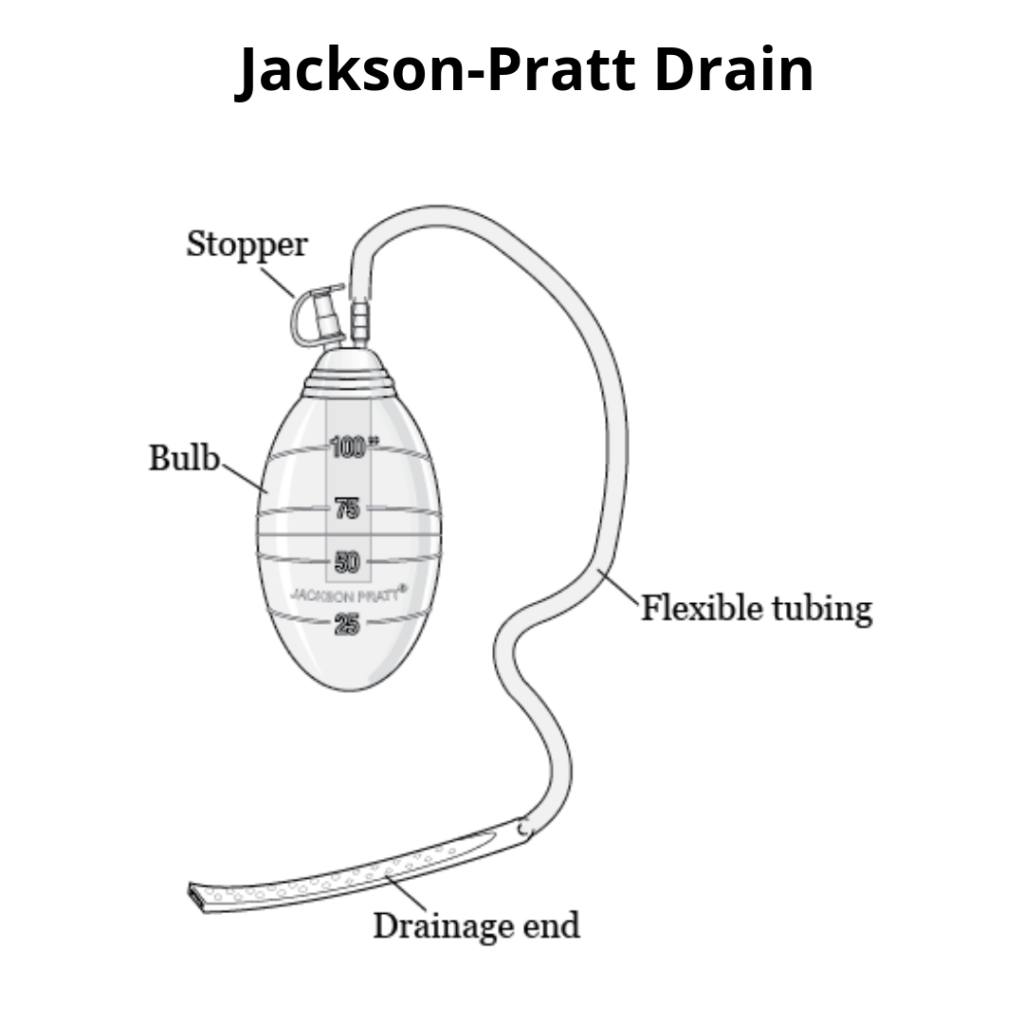What is a Jackson Pratt Drain?
JP drains are often placed in wounds during surgery to prevent the collection of fluid underneath the incision site. This is a closed, air-tight drainage system which operates by self-suction. The drain(s) promote healing by keeping excess pressure off the incision and decreasing the risk of infection.
The drain is sutured (stitched) in place at the skin at the site of insertion to promote stability. Clots in the tubing are expected as long as they do not interfere with the drainage collection. The drain(s) is left in place until drainage is approximately 30 cc’s or less (or 30 ml’s, or 1 ounce) per drain for each of 2 consecutive days. The fluid which collects in the bulb is normally very red at first, changing to more orange or straw-colored the longer it is in place.

